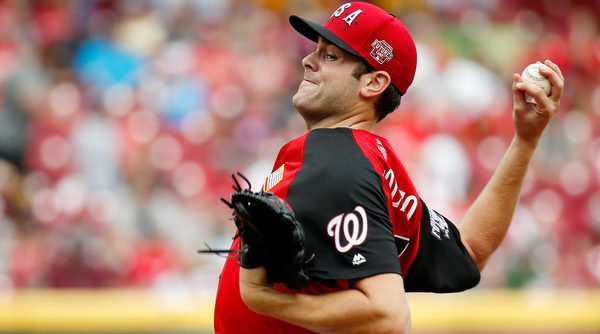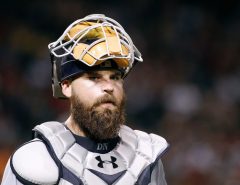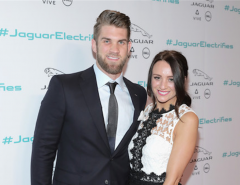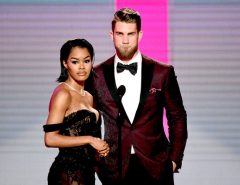After the MLB Draft ended Saturday, the team and fans alike could begin getting excited about the Nationals’ selections and dreaming on their status as prospects. But the MLB draft is distinct from its NBA and NFL counterparts in that players don’t always sign. High schoolers have the leverage of going to college, and college juniors can go back for their senior year, so players only go pro if they get enough money. Bonus demands are why popular Nats target and potential first-round prospect Drew Mendoza got drafted in the 36th round, and why a number of the players the Nationals chose won’t be joining the organization this season.
So which of these players will or won’t wear a Curly W (or an Auburn Doubledays jersey) by the July 15th deadline? Who they are and where they were drafted can give us a pretty good idea.
As a general rule of thumb, first-round picks sign. If there is any doubt about whether a player will sign, it’s known far in advance, like with the Red Sox and 12th overall pick Jason Groome. And given that Nats first rounders Carter Kieboom and Dane Dunning have both already said they’ll sign, there’s no concern there.
Also, college players taken in the early and middle rounds almost always sign. Many college players are taken in the top 10 rounds because they’re the best players available, but teams also often pick college seniors who will sign for cheap in order to save slot money. Picks in the first 10 rounds have an allotment of bonus money that counts towards a team’s pool, while bonuses paid in rounds 11-40 only count towards a team’s bonus pool for whatever amount they are over $100,000. For example: The Nationals chose Grand Canyon senior shortstop Paul Panaccione in the 10th round, 304th overall. That pick has a slot value of $156,600. So if the Nationals sign Panaccione for $10,000, they can sign a player in the 11th round for $246,600 without exceeding their bonus pool. But if they signed Panaccione for $246,600, they would not get any savings by signing their 11th-round pick for $10,000 and would have to find $90,000 worth of savings elsewhere.
Of course, college players don’t always sign, like Nats second rounder Andrew Suarez and ninth rounder Austin Byler in 2014. Some have real signability questions for whatever reason, but some just come out of nowhere, like TCU C John Clay Reeves and WVU RHP Blake Smith in the 20th and 24th rounds last year, respectively.
On the flip side of that coin, high schoolers taken outside of the top few rounds rarely sign. They are often taken late so that a team can make a run at them if it finds itself with some extra bonus money, but that rarely comes true. Of course, rarely doesn’t mean never: The Nationals signed 34th-rounder Tyler Watson out of high school last year for $400,000. But don’t expect it.
These heuristics can help us not worry about most of the Nats’ draft picks, but let’s look at a few special cases whose signability may be a question. Each player is listed with the round he was selected in and his ranking in Baseball America’s top 500 draft prospects.
High school LHP Jesus Luzardo (3rd round, ranked 50th)
Luzardo was considered a first-round talent before tearing his ulnar collateral ligament and undergoing Tommy John surgery in March. Of course, the Nats arguably have the best track record of any team in baseball with rehab from Tommy John, so Luzardo could be more inclined to sign. He certainly sounded like a player about to go pro in a Sun-Sentinel article, saying that the Nats “have a great organization. I’ve heard a lot of great things. They’re great with Tommy John rehab guys, so I can’t wait to rehab with them and hopefully make it to the majors.” But he also said he expected to be offered substantially more than the $635,800 slot value for his pick, which is unsurprising for a player many connected to the Nationals in the first round. I fully expect Luzardo to sign, but it could take something more like $800,000 (or more).
University of Texas RHP Morgan Cooper (34th round, ranked 338th)
In addition to tabbing a recent Tommy John patient, the Nationals also drafted a player who had already returned from Tommy John. Cooper missed all of the 2015 season after the elbow surgery and returned to somewhat lackluster results. As a redshirt sophomore, Cooper has much more leverage than most college draftees, as he could go back to school and not be coerced into signing for cheap as a senior. MLB.com’s Bill Ladson reports that Cooper slid so far due to bonus demands, and that it’s unknown whether he will sign. Generally speaking, if a player falls to the 34th round due to bonus demands, he doesn’t sign. But if the Nats can scrounge together enough savings from other picks, Cooper might be at the top of their list. Assistant GM Kris Kline said, “I believe he is going to be really good someday.”
High school OF Jordan McFarland (36th-round, ranked 374th)
ESPN’s Keith Law tied McFarland to the Nationals in the earlier rounds, but their decision to tab him so late is a likely indicator that they won’t sign him. But he’s worth mentioning for their demonstrated interest before, and he could be another target if the Nats find themselves with some extra money. He was not an extremely highly touted prospect, so it’s not as though he would demand seven figures, but he is committed to Arkansas and would likely have been picked earlier if the Nats knew he could be had for a reasonable sum.
Tags: MLB Draft, Nationals, Nats, Washington Nationals




Leave a Reply